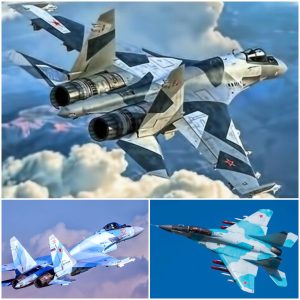1. Stealth Capabilities
One of the primary selling points of the Su-57 is its stealth technology, which is intended to make it less detectable by radar. However, numerous reports suggest that the Su-57’s stealth capabilities are inferior compared to its American counterparts. The aircraft’s design features, such as its engine nozzles and airframe, reportedly fail to achieve the same level of radar cross-section reduction as seen in the F-22 or F-35. This compromises its ability to evade detection and engage in effective first-strike operations.
2. Engine Reliability
The Su-57 has experienced significant issues with its engines. The current model uses the AL-41F1 engine, which has been plagued by reliability problems and does not meet the thrust and performance specifications initially promised. The intended next-generation engine, the Izdeliye 30, is still under development and has faced delays. This has resulted in performance shortfalls, including reduced speed, maneuverability, and range, which are critical for modern air superiority fighters.

3. Avionics and Sensor Suite
Advanced avionics and sensor systems are crucial for a fifth-generation fighter jet to maintain situational awareness and engage multiple targets simultaneously. The Su-57’s avionics suite has been criticized for not matching the sophistication of those found in Western aircraft. Issues with the integration and functionality of its radar, electronic warfare systems, and targeting systems have been reported, limiting the aircraft’s operational effectiveness.
4. Production and Cost Issues
The production of the Su-57 has been slow and costly. Initial plans to produce large numbers of the aircraft have been scaled back due to budget constraints and technical challenges. As a result, only a limited number of Su-57s have been delivered to the Russian Air Force, raising doubts about the program’s scalability and cost-effectiveness. The high unit cost of the Su-57, combined with its aforementioned performance issues, further undermines its value proposition.
5. Operational Readiness and Deployment
Operational readiness is a crucial factor for any military asset. The Su-57 has faced delays in reaching full operational capability, and its deployment has been limited. Reports indicate that the aircraft has yet to demonstrate consistent reliability in active service. Without a proven track record in various combat scenarios, the Su-57 remains an untested and uncertain element in Russia’s military arsenal.
6. Comparative Inferiority
When compared to its rivals, such as the F-22 Raptor and the F-35 Lightning II, the Su-57 falls short in several key areas. The American jets benefit from decades of development, operational experience, and extensive use in various conflicts, giving them a tactical edge. Additionally, the F-35’s global partnership program has led to widespread adoption and interoperability among allied nations, something the Su-57 lacks.
Conclusion
While the Su-57 represents a significant technological advancement for the Russian aerospace industry, its inherent weaknesses undermine its status as a top-tier fighter jet. Issues with stealth capabilities, engine reliability, avionics, production, and operational readiness collectively diminish its perceived value and effectiveness. Until these challenges are addressed, the Su-57 may struggle to achieve the recognition and operational success envisioned by its developers.







